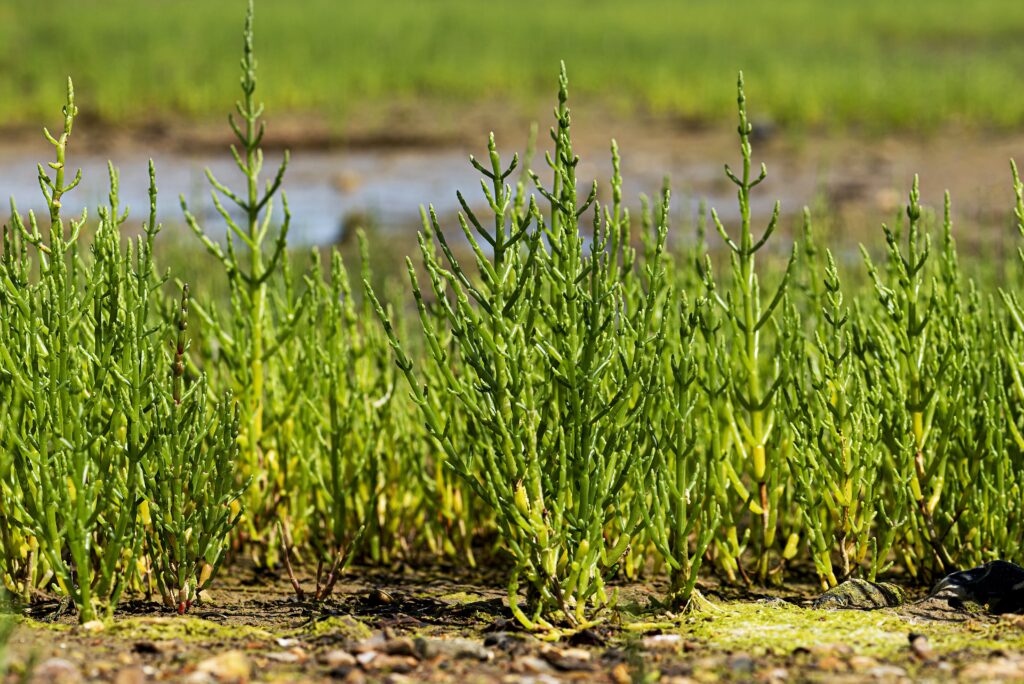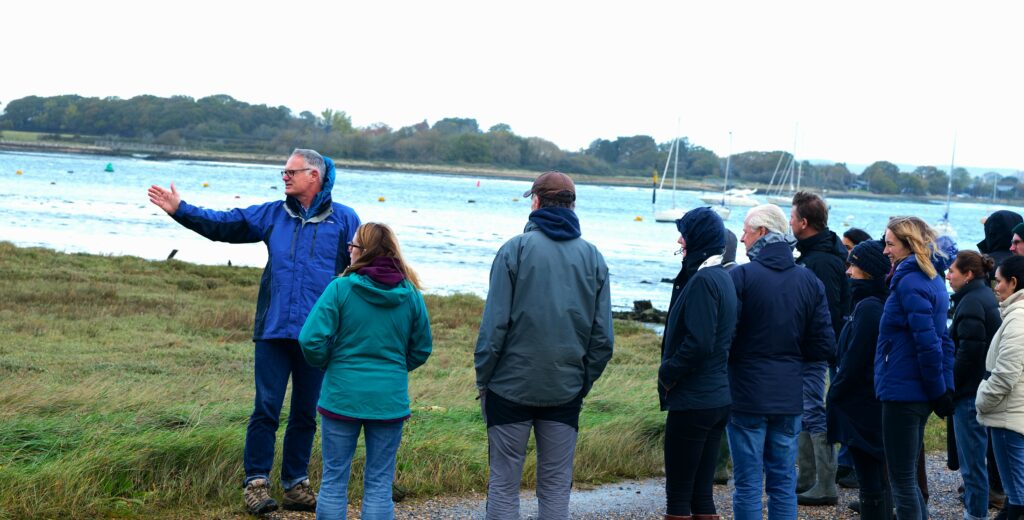Switched on to nature tech?
Whether it is out at sea or in the heart of our…
Learn what we're working towards, together
Supporting organisations, networks and initiatives
Get to know our team & board of trustees
In November the UK Centre for Ecology and Hydrology and EKN organised a field meeting to Chichester Harbour to learn about the AONB’s efforts to conserve salt marshes and their ambition to engage with investors. One of the attendees, the communications specialist George Smart, offers thoughts on why, and how, ecosystems like saltmarsh should tell compelling stories.
It’s a big week for the last two remaining Giant Panda’s in the UK. Well, the last two held in Edinburgh Zoo, at least. They will be packed up and returned to China. As the zookeepers of Edinburgh wave goodbye from the airport tarmac, the world’s press marks this moment with significant coverage.
Little coverage has been given to the departure of Salt Marsh from the UK. It has been leaving our shores in droves since the 1950’s with only around 10% now remaining. Like the Pandas we can, with the will and application of resources, bring it back. It’s a choice. Not with an airline ticket though; this requires the collective will that follows the understanding of why its repatriation is vital. The Pandas were important not just in protecting their species from extinction, but were a significant revenue driver for the Zoo. The Salt Marsh also has significant commercial opportunity, but more crucially plays an apex role in carbon sequestration and biodiversity recovery – so why the comparative silence?

The problem here is simple. The public at large are naturally attracted to ‘charismatic species’ – Giant Panda, elephant, rhino, polar bears etc, however global attention must be drawn towards the smaller and less traditionally charismatic species on which these poster-species rely. In a world where short attention spans are the principal challenge, the communication of opportunity, not just challenge, is key. As Sir David Attenborough points out, “Saving our planet is now a communications challenge. We know what to do, we just need the will.”
As COP28 wrestles with its latest crisis of integrity, those who are working to answer some of the world’s biggest challenges through Nature Based Solutions must protect their own and avoid being grouped in with the greenwashed political drama where carbon extraction retains its leading role.
Strategic communication and storytelling with simple, emotive narratives that capture the imagination are crucial. Where once Dickens described Salt Marsh as a hostile place of treachery and evil, you must bring storytellers to its new heroic narrative with as much colour and focus as he did.

So how can you apply this to your own communications?
First and foremost – why are you communicating and what do you want this to achieve?
Who are they and what motivates them? Is this the first they’re learning about the issue and its solution, or do they just need that final push to act?
All stories have protagonists, and many people connect best with a hero. It’s necessary to consider your ‘cast’ and who – or what – the leading figure may be. What will people connect with, and what should be celebrated or protected to elicit an action?
It’s important to appreciate the risk of inaction, but its effectiveness must be seen in context. The environmental alarm has been ringing for decades, becoming a demoralising white noise for many to drown out. The stick has been used so hard there’s nothing left; what opportunity can you use as the carrot that will motivate?
Perhaps a simple one, but a ‘call to action’ which is all too often missing from the doom-laden communications of recent times. Humans are, for the most part, good and kind and conscious. When people want to help, make it easy and accessible for them to do so.
Communication isn’t a one-time thing. Conversations grow and evolve as two (or more) sides build understanding and get to know each other better. Collect all the feedback you can to guide your next message; what worked, what didn’t, how can you be more effective in future.
George Smart is Co-Founder at Hornbeam & Co.,an impact accelerator which provides strategic communications and counsel to the innovators creating a sustainable future
Create an account today to favourite content, recieve updates and join groups.
Already have an account? Sign in here